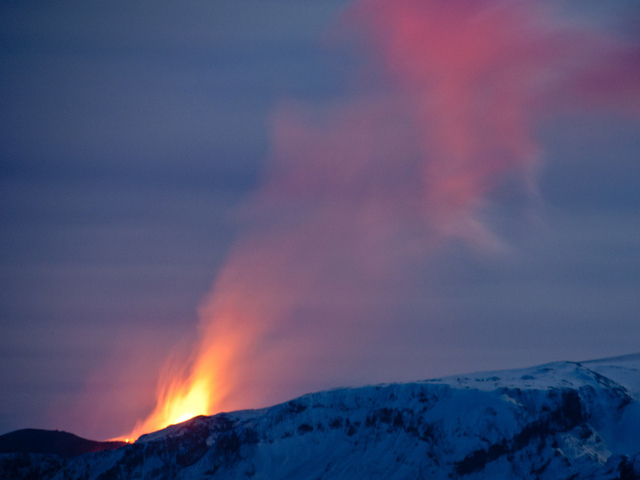
Beginning in 1783, Iceland endured an eight-month-long volcanic eruption that left a seemingly endless haze covering the landscape. The dry fog of microscopic aerosol particles, mostly sulfur oxides, caused the deaths of fully 20 percent of Iceland’s population, along with 75 percent of their livestock.
The effects of the eruption at Laki were not limited to Iceland. In the Netherlands, trees dropped their leaves in June, as if signaling a very early autumn. The number of deaths recorded in England that year was 10-20 percent above average. Reports of deaths and health problems came from as far away as Italy.
The mouthful that was Eyjafjallajökull reminded us in 2010 that volcanoes can easily bring air travel to a grinding halt, but what would happen if an eruption on the scale of Laki occurred today?
To estimate the direct impact on human health, a group of researchers first used an atmospheric aerosol model to simulate the eruption of Laki under a range of present-day atmospheric conditions. By doing so, they were able to calculate the resulting concentrations of aerosols over Iceland and continental Europe. They found that average concentrations across Europe would rise to more than double the background average over the first three months of the eruption. The highest concentrations, occurring in northern Europe, would reach more than triple background levels.
Over the course of the eruption, the models estimated that atmospheric aerosol levels would exceed the World Health Organization’s air quality standard for over a month in Europe, and almost 6 months in Iceland.
From there, the researchers used medical studies of the impact of particulate matter to estimate the number of direct fatalities. They found that, in the year of the eruption, volcanic aerosols would cause 50,000 to 230,000 deaths. While that’s certainly a terrible loss of life, it’s actually a significantly smaller percentage of the population than died during the 1783 eruption.
The authors point to several possible explanations for this. Primary among them is that this analysis does not account for agricultural losses (including climate-related losses), which were significant in several regions. It is also likely that people today are in better overall health than populations in the 1780s, meaning they would be more likely to survive such an event. In addition, there is always uncertainty when extrapolating epidemiological data to higher exposure levels.
There have been four “Laki-like” eruptions in Iceland over the past 1,150 years—some bigger, some smaller—which means this is not just an academic exercise. It’s a scenario that we could very well encounter in the near future.
PNAS, 2011. DOI: 10.1073/pnas.1108569108 (About DOIs).
Listing image by Photograph by Tom Burke
reader comments
42